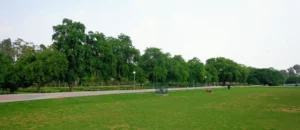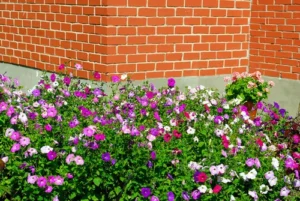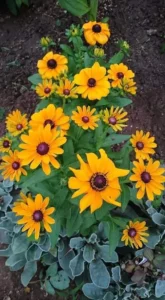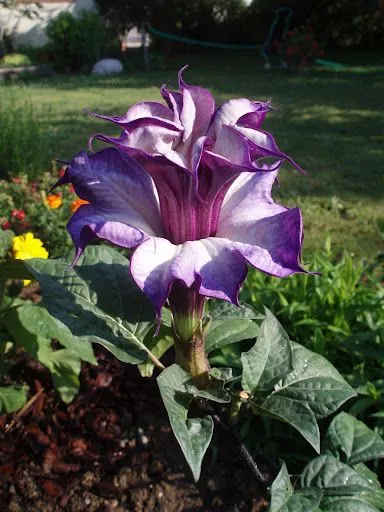Comprehensive Guide to Famous Gardens and Botanical Wonders Around the World
Introduction
Gardens have long been cherished as places of beauty, tranquility, and cultural significance. Throughout history, civilizations have cultivated gardens not only for aesthetic pleasure but also as symbols of wealth, power, and environmental stewardship. From the meticulously curated gardens of Europe to the sprawling rainforests of South America, each botanical wonder offers a unique glimpse into the diversity and splendor of the natural world.
1. Keukenhof Gardens, Netherlands
Nestled in the heart of the Netherlands, Keukenhof Gardens stands as a testament to the country’s rich horticultural heritage. Spanning 79 acres of meticulously landscaped grounds, Keukenhof is renowned for its dazzling display of tulips. Each spring, over 7 million bulbs burst into bloom, transforming the landscape into a kaleidoscope of colors. The garden’s origins date back to the 15th century when it served as the kitchen garden (“Keukenhof” translates to “Kitchen Garden”) for the nearby castle. Today, Keukenhof attracts millions of visitors from around the globe who come to witness this breathtaking spectacle of floral artistry.
The layout of Keukenhof features a series of themed gardens, including the Historical Garden, where visitors can explore tulip varieties dating back to the Dutch Golden Age. The Japanese Garden offers a tranquil retreat with winding paths, bonsai trees, and traditional Japanese architecture, while the Water Garden showcases aquatic plants and serene ponds. Sustainability lies at the heart of Keukenhof’s operations, with efforts focused on eco-friendly practices such as water conservation, organic gardening, and biodiversity preservation. Educational programs and guided tours further enrich the visitor experience, providing insights into the garden’s history, botanical collections, and ongoing conservation efforts.
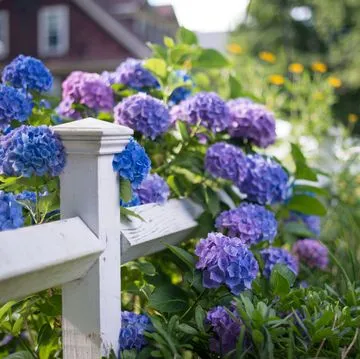
2. Butchart Gardens, Canada
Located on Vancouver Island near Victoria, British Columbia, Butchart Gardens is a prime example of landscape transformation on a grand scale. What began as a limestone quarry in the early 20th century was transformed by Jennie Butchart into a series of themed gardens that have captivated visitors for generations. Today, Butchart Gardens spans 55 acres and features over 900 plant varieties, including vibrant floral displays, tranquil ponds, and meticulously sculpted hedges.
The gardens are divided into several distinct areas, each with its own unique charm. The Sunken Garden, with its dramatic sunken amphitheater and cascading floral displays, is a highlight of the Butchart experience. The Rose Garden showcases over 250 varieties of roses in a symphony of colors and fragrances, while the Japanese Garden offers a serene retreat with winding paths, lanterns, and traditional tea houses. Throughout the year, Butchart Gardens hosts seasonal events and cultural performances, including concerts, fireworks displays, and holiday celebrations that attract visitors from around the world.
Butchart Gardens is committed to sustainability and environmental stewardship. Initiatives such as composting, integrated pest management, and water conservation practices ensure that the gardens thrive while minimizing their ecological footprint. Educational programs, workshops, and garden tours provide visitors with opportunities to learn about horticulture, conservation practices, and the history of Butchart Gardens. Whether strolling through the Italian Garden or marveling at the Spring Prelude indoor floral display, a visit to Butchart Gardens is a journey through art, history, and natural beauty.
3. Kew Gardens, United Kingdom
Founded in 1840, the Royal Botanic Gardens, Kew, is not only a botanical garden but also a UNESCO World Heritage site and a global center for scientific research and conservation. Located in southwest London, Kew Gardens spans 326 acres and boasts one of the most diverse botanical collections in the world, with over 50,000 living plants and a herbarium containing over 7 million preserved specimens.
At the heart of Kew Gardens are its iconic glasshouses, including the Palm House, a marvel of Victorian engineering with its curved iron and glass structure housing tropical plants from around the world. The Temperate House, the largest Victorian glasshouse in the world, showcases plants from temperate regions, while the Princess of Wales Conservatory features cacti, orchids, and other exotic plants in themed environments.
In addition to its botanical treasures, Kew Gardens is renowned for its conservation efforts and research initiatives. The Millennium Seed Bank Partnership, based at Kew’s Wakehurst site in West Sussex, aims to conserve global plant diversity by collecting and storing seeds from threatened species. Kew’s scientific research informs conservation policies and practices worldwide, contributing to efforts to protect biodiversity and mitigate the impacts of climate change.
Visitors to Kew Gardens can explore themed gardens such as the Waterlily House, the Rhododendron Dell, and the Arboretum, which showcase plants from different continents and ecosystems. Educational programs, guided tours, and seasonal events offer opportunities for visitors of all ages to learn about plants, ecology, and conservation. From the historic landscapes of the Kew Palace Gardens to the modernist design of the Davies Alpine House, Kew Gardens continues to inspire and educate visitors about the importance of plants and biodiversity in our changing world.
4. Singapore Botanic Gardens, Singapore
Established in 1859, the Singapore Botanic Gardens is not only a national icon but also a UNESCO World Heritage site and a living museum of tropical plant diversity. Located in the heart of Singapore, the gardens cover 82 hectares and attract over 4.5 million visitors annually with their lush landscapes, serene lakes, and world-class botanical collections.
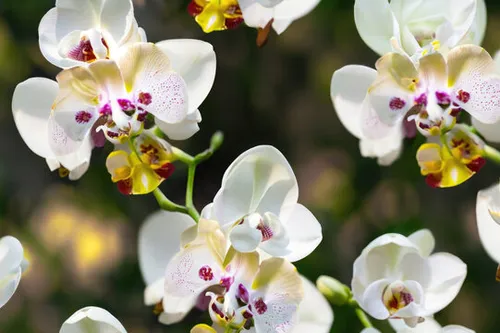
A highlight of the Singapore Botanic Gardens is the National Orchid Garden, home to over 1,000 orchid species and 2,000 hybrids, including the national flower of Singapore, the Vanda Miss Joaquim. The orchid garden showcases the diversity and beauty of orchids from around the world, with themed displays and seasonal orchid shows that delight visitors throughout the year.
In addition to the orchid garden, the Singapore Botanic Gardens features themed gardens such as the Ginger Garden, which showcases the diversity of ginger and heliconia plants, and the Evolution Garden, which explores the evolution of plants over millions of years. The Healing Garden highlights the medicinal uses of plants, while the Rainforest and Symphony Lake provide tranquil retreats amidst Singapore’s urban landscape.
The Singapore Botanic Gardens plays a crucial role in plant conservation and research, with initiatives focused on orchid breeding, horticultural research, and biodiversity conservation. The gardens also host educational programs, guided tours, and workshops that promote environmental awareness and sustainability practices. From the historic charm of the Bandstand to the contemporary design of the Learning Forest, the Singapore Botanic Gardens continues to inspire visitors with its beauty, diversity, and commitment to plant conservation.
5. Gardens of Versailles, France
The Gardens of Versailles, designed by landscape architect André Le Nôtre in the 17th century, are a masterpiece of French formal garden design and a symbol of the grandeur and opulence of the French monarchy. Located adjacent to the Palace of Versailles, the gardens cover over 800 hectares and feature geometrically aligned flowerbeds, ornamental lakes, and sculpted hedges that reflect the principles of symmetry and balance.
The gardens are divided into several distinct areas, each with its own unique features and architectural elements. The Parterres d’Eau, or Water Parterres, feature reflecting pools and fountains that create a sense of movement and tranquility. The Orangerie, with its expansive citrus trees and architectural pavilions, served as a winter garden for exotic plants during the reign of Louis XIV.
One of the most iconic features of the Gardens of Versailles is the Grand Canal, a vast artificial lake that stretches over 1.5 kilometers and was used for boating and royal celebrations. The Grand Trianon and Petit Trianon, located within the gardens, served as private retreats for French monarchs and are surrounded by intimate gardens and picturesque landscapes.
The Gardens of Versailles continue to enchant visitors with their beauty and historical significance. Restoration efforts in recent years have focused on preserving Le Nôtre’s original vision while integrating modern amenities and sustainable practices. Annual events such as the Musical Fountains Show and the Night Fountains Show showcase the gardens’ beauty in different lights, attracting visitors from around the world to experience the magic of Versailles.
6. Hanging Gardens of Babylon, Iraq (Ancient Wonder)
The Hanging Gardens of Babylon are among the Seven Wonders of the Ancient World, known for their legendary beauty and engineering marvels. According to ancient texts, the gardens were built by King Nebuchadnezzar II in the 6th century BCE as a gift to his wife, Amytis of Media, who missed the lush greenery of her homeland.
Scholars debate the exact location and existence of the Hanging Gardens, with some suggesting that they were located in the ancient city of Babylon (modern-day Iraq) near the Euphrates River. Descriptions of the gardens in ancient texts depict terraced gardens with cascading plants and irrigation systems that transported water from the river to nourish the plants.
While archaeological evidence of the Hanging Gardens remains elusive, their legacy has endured through art, literature, and cultural imagination. The gardens symbolize the ingenuity of ancient engineering and the desire to create paradise-like landscapes in harsh desert environments. Whether real or mythical, the Hanging Gardens of Babylon continue to inspire awe and fascination as a testament to human creativity and the enduring allure of botanical beauty.
7. Amazon Rainforest, South America
The Amazon Rainforest is not just a garden but a vast ecosystem of unparalleled biodiversity and ecological importance. Spanning nine countries in South America, including Brazil, Peru, and Colombia, the Amazon covers over 5.5 million square kilometers
